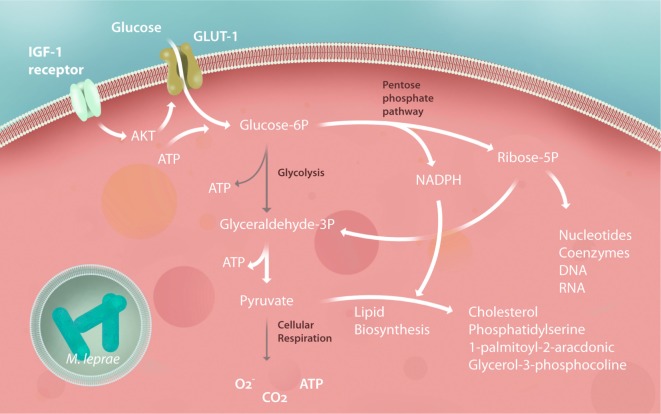Figure 3.
Schwann cell central metabolism is subverted by Mycobacterium leprae. After infection, Schwann cells increase their insulin-like growth factor (IGF) expression, upregulating glucose transporter 1 (GLUT-1) and glucose uptake by Akt signaling. Glycolysis is downregulated, feeding the pentose phosphate pathway (PPP) with carbons used to synthesize building blocks to promote Schwann cell dedifferentiation and proliferation, generating during this process the reducing power [nicotinamide adenine dinucleotide phosphate (NADPH)] responsible for pumping up lipid biosynthesis. Pyruvate generated by the PPP is rapidly converted to citrate and subsequently converted to lipids, virtually stopping the tricarboxylic acid cycle, respiration and mitochondrial energy potential of the Schwann cells. All of these modulations are crucial for subverting the host immunity against the mycobacteria and, consequently, to the success of the M. leprae infection, representing potential for new host-target therapy strategies to halt leprosy progression. The gray arrows represent downregulated pathways.

